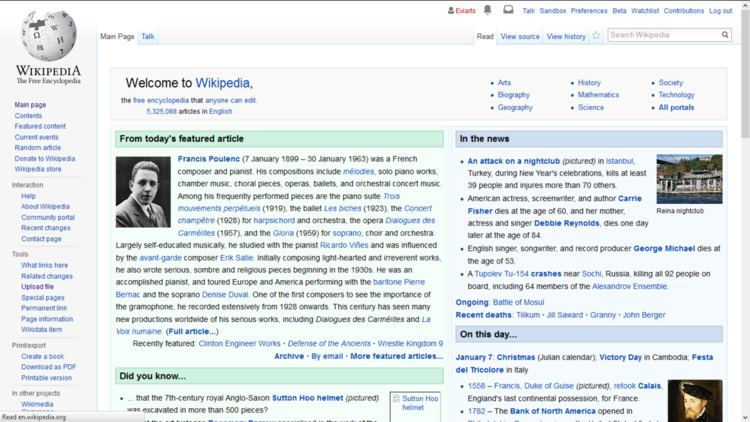 | ||
A screenshot is an image of what is visible on a visual output device such as a computer monitor or television. Usually, this is a digital image created by the operating system or software running on the device, but it can also be a photograph or a recording made by a device intercepting the video output of the display.
Contents
Digital techniques
The first screenshots were created with the first interactive computers around 1960. Through the 1980s, computer operating systems did not universally have built-in functionality for capturing screenshots. Sometimes text-only screens could be dumped to a text file, but the result would only capture the content of the screen, not the appearance, nor were graphics screens preservable this way. Some systems had a BSAVE command that could be used to capture the area of memory where screen data was stored, but this required access to a BASIC prompt. Systems with composite video output could be connected to a VCR, and entire screencasts preserved this way.
Modern operating systems provide functions for creating screenshots. For example, on Windows devices, pressing PrtScr puts a screenshot of the entire desktop in the clipboard, where it is accessible to other software. In OS X, the command ⌘ Cmd+⇧ Shift+3 serves the same purpose. There are also a number of applications dedicated to taking screenshots, either provided with the operating system or available separately, that provide more control over which portion of the screen to capture.
Photographic techniques
Screenshot kits were available for standard (film) cameras that included a long antireflective hood to attach between the screen and camera lens, as well as a closeup lens for the camera. Polaroid film was popular for capturing screenshots, because of the instant results and close-focusing capability of Polaroid cameras. In 1988, Polaroid introduced Spectra film with a 9.2 x 7.3 image size more suited to the 4x3 aspect ratio of CRT screens.
In the 1980s and 90s, for instance, it was common for screenshots of video games reproduced in video game magazines to have been taken on film cameras from monitors that were set up in dedicated rooms. These rooms were unlit to avoid screen glare, and the photographs had to be shot at slow speeds of 1/25th of a second or less, to avoid the CRT monitor's refresh line from appearing on the image. But this meant that action scenes with fast-moving elements couldn't be captured unless the software had a pause function.
Copyright issues
Software creators have on occasion claimed copyright on screenshots of their software, as a derivative work of the widgets and other art created for the software. Nonetheless, screenshots may still be legally used to a certain extent under the principle of fair use in the U.S. or fair dealing and similar laws in other countries.
